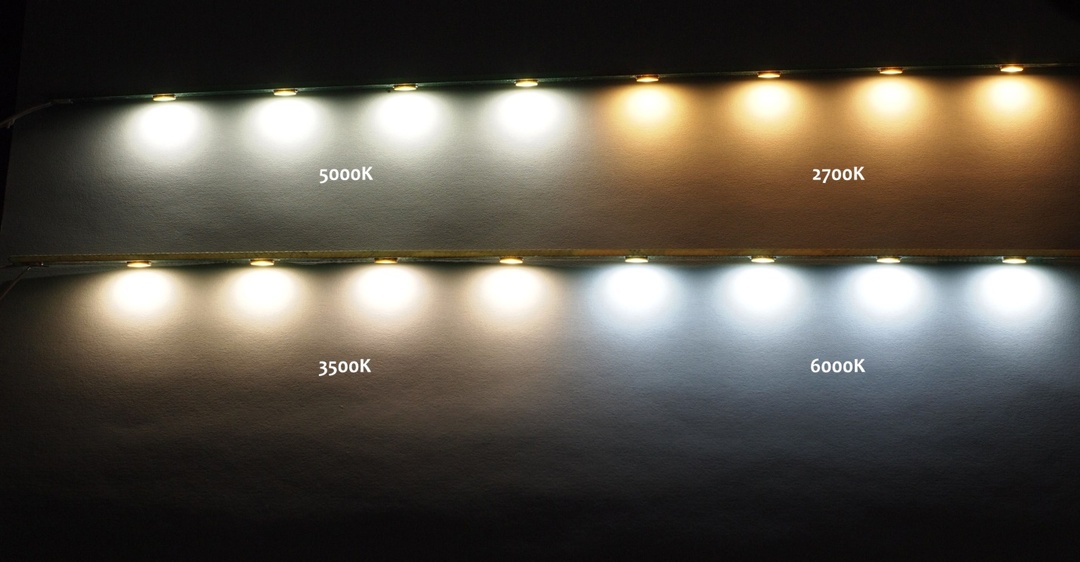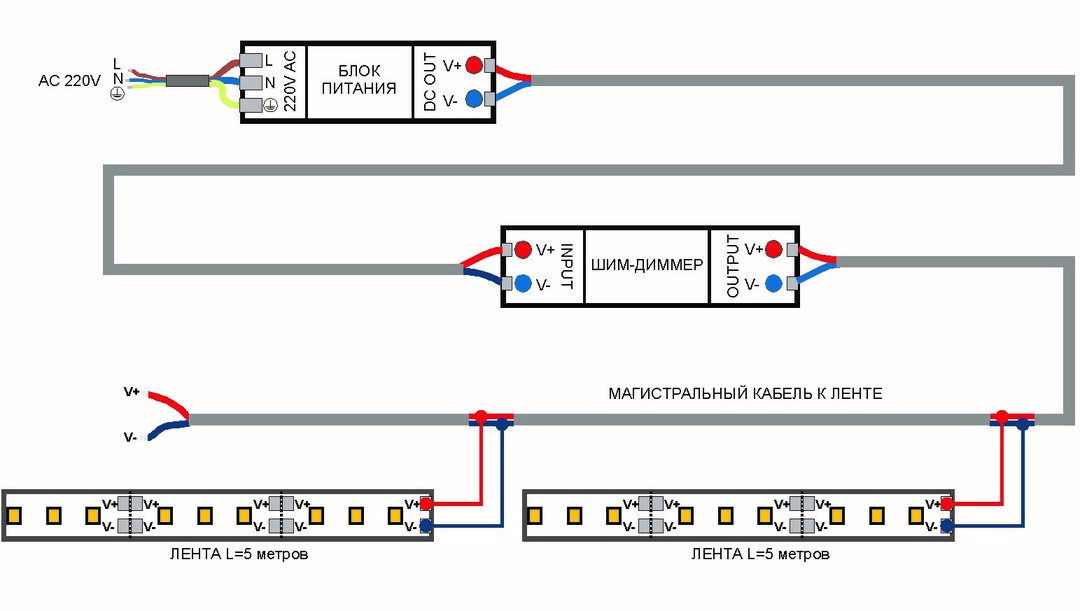LED lamps everywhere replace incandescent bulbs because they are energy efficient and durable. But often the buyers bypass these "LEDs" side, because they can not figure out their labeling.
Technical characteristics of LED lamps are more diverse - before it was enough to choose the power in watts, and with new sources of artificial light everything is somewhat more complicated. To choose the best option, you must take into account a number of parameters.
We will help you understand the characteristics of Led-lamps, explain the meaning of marking, and also give practical advice on choosing lamps for different rooms. The detailed information will be a valuable help in organizing comfortable lighting for an apartment, home or office.
The content of the article:
-
Characteristics of LED lamps
- Color temperature and light shade
- The degree of color rendition LED-lamps
- Angle of dispersion and intensity of luminescence
- Design: base and bulb
- Power and power settings
- LED selection for different rooms
- Conclusions and useful video on the topic
Characteristics of LED lamps
To choose the right LED light bulb, it is necessary to study all its parameters. The light emitted by it differs from the more usual radiation of incandescent lamps. Moreover, this luminous flux is not so monotonous as before.
The LEDs vary greatly in color shading (color temperature), scattering angle, and other parameters of the emitted light.

When buying a LED-lamp, the main attention should be paid not to large advertising figures, but to the description of the parameters in small print - there is all the most interesting. Their detailed study will allow to avoid many mistakes.
The abbreviation "LED" means an abbreviation for Light-Emitting Diode. This is the LED lamp artificial lighting, which are sold in stores lighting. They are used in lighting devices installed both on the street and in premises of various purposes.
Unified mandatory marking for all LED lamps is not provided. Each manufacturer forms its own article. The main technical characteristics of the product it contains, of course.
However, this is often done in the form of abbreviations, which are not easily understood. In this case, a number of parameters are indicated only on the box from under the light bulb.
All this must be taken into account when choosing LED. Lamps-LEDs for each room and lighting zone is recommended to select individually. In this matter, not only the color temperature is important, but also other characteristics of the LED lamp, and these parameters have a lot of it.
Color temperature and light shade
On the packaging of each LED-lamp indicator color temperature is always in the most prominent place. This is the main feature of this light.
If ordinary tungsten filament bulbs have light colors in a narrow range of 2200–2800 K, then LEDs vary in a much larger range.

Often, the “color temperature” of a LED lamp erroneously equates to the “heat” it emits, but the LED, unlike the Ilyich light bulb, practically does not emit heat energy when it is illuminated (+)
This indicator does not correlate with the temperature of the heating of the surface of the LED light bulb and its radiated heat. At maximum, the LED can heat up to 60–65°WITH. For comparison, the analog with a filament per 100 W is heated to 250–265 ° C.
Virtually all of the electricity in the LED is converted to light. And no matter what color spectrum it belongs to, the temperature of surface heating will always be approximately the same.
All led bulbs by color temperature (light colors) can be divided into three groups:
- WW (Warm White) - “warm white” with a radiation spectrum of 2700–3300 K;
- NW (Neutral White) - “natural white” with a range of 3300–5000 K;
- CW (Cool White) - “cold white” with light emission> 5000 K.
According to human perception, the first option corresponds approximately to the illumination outside from the sun at the horizon. The second is sunshine at lunchtime in clear weather. The third at the beginning of the range coincides with the brightness of the sun at the zenith, and when it goes to 6500–7500 K, it equals natural daylight with clouds.

The color temperature of the LED indicates the shade of light emitted by the lamp in the illumination device - the warm tones of “WW” calm, and the cold “CW”, on the contrary, invigorate and adjust to work (+)
Choosing the color of light, you need to focus on where the lamps will be used later. Warm yellow shades are more suitable for bedrooms, while white or natural spectrum whites are suitable for corridors or kitchens.
Literate choice of LED - the whole science. And the main thing here is to start from the most lit room. An improperly selected LED light bulb can severely damage a person's vision.
Designers-illuminators have to consider not only the color of the LED, but also the brightness with the color rendering of the light source. At the same time, the influence of the created lighting on people's perception plays an important role.
When a person enters a room from the street, the eye of a person must quickly adapt to the changing light conditions. Often, the colors of objects in the first minutes even seem distorted and incorrect.
The degree of color rendition LED-lamps
The second most important indicator of LED light is the color rendering index, denoted CRI or Ra. This indicator is responsible for the natural transfer of all shades of color from an object that falls into the beam of lighting device.

The maximum Ra is 100 (this is the reference sunlight that a person encounters at noon on a clear day) - usually this parameter for LED lamps varies between 80–90 (+)
If Ra <80, then objects in the illuminated LED room will visually appear dull. It should be understood that the perception of colors is individual for each person. Plus with age, its distortion also occurs.
For the standard Ra = 100, it is customary to accept an undistorted color rendition, which is formed when the object is illuminated by the rays of the sun. That is, so we usually see it on the street in bright natural, rather than artificial indoor lighting.
The color rendering index for LED lamps can be divided into four classes:
- 100 - maximum, which is equivalent to the perception of color in natural light;
- from 100 to 90 - such bulbs are designed for places where the most accurate color reproduction is required (laboratories, desktops and zones);
- from 90 to 80 - options for ordinary living rooms and general lighting;
- below 80 - lamps in lamps for corridors, toilets and back rooms where high quality of transfer of shades is not so important.
There is no direct connection between color rendering and color temperature. These are independent characteristics of the LED lamp.
Angle of dispersion and intensity of luminescence
One of the advantages of LED lamps over conventional ones is the narrow direction of the flow of illumination. By itself, one LED forms a light beam only straight away from its body.
In the LED-bulb they are usually inserted several pieces or an entire array to create a certain cone of light. Is the same light bulb, on the contrary, shines immediately around in all directions.

Lamps with a narrow angle of dispersion are widely used for zoning rooms and in nightlights, with their help the designer places light accents and gives a separate space in the interior.
The luminous flux of LED bulbs can be spread at an angle of 60 to 340 ° They are used to organize oriented spot lighting and to illuminate specific areas in the interior. Wide-angle lamps are designed for general ceiling lighting.
The intensity of the glow (light output) reflects the radiation efficiency of the LED-lamp. This characteristic is measured in lm / w. The value in lumens (lm) is the value of the luminous flux, and Watts is the power of the light bulb. In the marking they are indicated together by a single digit in lm / W or separately.
The higher this indicator, the more energy-efficient and economical the LED lamp. On the other hand, the greater the value of the luminous flux of a particular light bulb, the less such products will be required to illuminate the room.
Design: base and bulb
Structurally, the LED lamp consists of:
- PCB with AC / DC current conversion driver;
- light source - one or more LEDs;
- bulb diffuser, designed for uniform light scattering;
- base and body.
Plus, there is a small radiator inside, which dissipates the thermal energy generated by the glow of the LED crystal. Although it is formed a little, but it is still there.
Of all these elements, the buyer's interest in the LED-lamp can only be caused by the shape of the bulb base type. The remaining details are not even described in the marking and data sheet of such bulbs.

LED lamps are now available with all types of caps (threaded, pin, soft and etc.) - this is specially made for their wider distribution and easy replacement of old analogues (+)
Most often at home LED-lamps are used with standard screw bases.
They have in the designation the letter "E" and the number indicating the size of the diameter. Typical option - E27 basesimilar to a conventional household 60, 80 or 100 watt filament lamp.
In the houses you can also find light bulbs with socle minion E14 ("Candles" for sconces).

The bulb in the form of an LED lamp can be any one from a classic pear-shaped to twisted and tubular - for each lighting project there is a most suitable option.
Models with G pin base or GU are designed to replace halogen analogues. And the GX is a small flat lamp for recessed lighting. They are mounted in the walls of furniture and ceilings.
The body design also varies in IP grade. In dry rooms without special dust (for example, corridors and bedrooms of apartments) IP20 or IP21 is enough. For installation in kitchens, bathrooms or garages, the lamp should be selected with IP56 and higher. And for the street fit only models with at least IP65.
Power and power settings
The power supply of the LED is a constant voltage of 12-24 volts. So that the LED bulb can be screwed into a 220 V luminaire, it has the correct transformer in its housing. With LED strips, this converter is an external device. The lamps, he was originally already built into the base.

When the voltage drops in the network quality LED-lamp does not burn and will continue to shine, it has built-in protection. However, the light output at a lower voltage will be lower than with proper power.
Glow lamps and power consumption are directly related to incandescent bulbs. The higher the first indicator, the higher and second.
With analogues on LED, the situation is somewhat different. Here, the brightness is determined by the characteristics of the installed inside the LEDs and their number. At the same power, different LED lamps can vary greatly in luminosity and color temperature.
LED selection for different rooms
The vision of a lamp with natural white light is the least tiring. However, for residential premises it is still recommended to select an LED with a soft yellow glow. Artificial light from them is more comfortable with prolonged exposure to the eyes. Bright room lights sooner or later begin to annoy.

The most optimal option of LED lighting for the home is “warm yellow” diffused light from the ceiling and spotlights with a neutral white spectrum in the zones
Lamps with blue cold shades are more intended for offices. There, the “vigor” and concentration “generated” by them will be most welcome. But in the bedroom and the nursery such options are definitely not worth installing.
Another point - the ripple of LED lights. If the transformer board for LED is designed unprofessionally, the lamp will pulsate. This is the result of its AC power.
In the overwhelming majority of cases, for the naked eye, this is even imperceptible. However, this constant pulsation has its negative effect on vision and the brain. It is not necessary when buying lamps with LEDs chasing the excessive cheapness.
It is at this point that many careless manufacturers save money, later creating problems for consumers with well-being.
Important value when choosing a diode bulbs will play and the manufacturer. We have prepared a series of review articles on LED lamps from different manufacturers.
We advise you to read:
- ASD LED bulbs: lineup review + selection tips and reviews
- LED lamps "Era": manufacturer reviews + a brief overview of the model range
- Osram LED lamps: reviews, advantages and disadvantages, comparison with other manufacturers
- LED lamps “Gauss”: reviews, review of the advantages and disadvantages of the manufacturer
Conclusions and useful video on the topic
To make it easier for you to understand how to choose the LED-lamp, we made a video selection with reviews from different manufacturers and a detailed description of their work.
Comparison of different models of LED lamps:
Description of the characteristics of LED in all details:
How are designed for domestic lighting LED bulbs:
When choosing an LED lamp for a household lighting fixture, it is necessary to take into account all its parameters and technical characteristics. There are a lot of them, but the time spent will certainly pay off. And not so much money, how much well-being and comfort of the household.
Is there anything to add, or have any questions regarding the choice of LED lamps? You can leave comments on the publication, participate in discussions and share your own experience of using such lamps. The form for communication is in the lower block.


